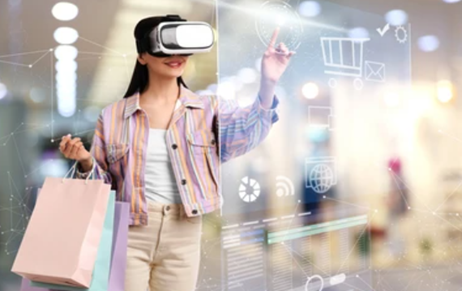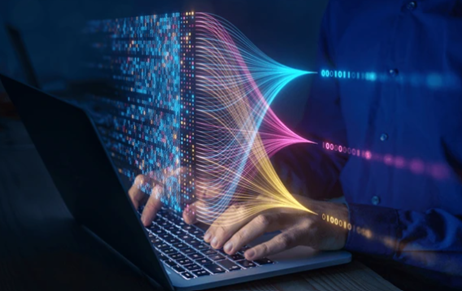In recent years, the world witnessed an exponential surge in the use of Artificial Intelligence…
Fading Reality: Growth of GenAI and Imminence of Ownership Conundrum
Introduction
We stand in the midst of a transformative epoch, set to witness the takeover of Generative Artificial Intelligence (GenAI) as the global tyrant. The use of metaphor ‘tyrant’ is an insinuation of the possible disorder that the unrestricted use of GenAI might unleash and the consequences it will have on the established laws. To put GenAI in the simplest terms, it is a branch of artificial intelligence that uses the patterns and structures from existing databases to produce a novel output. As the generative abilities of artificial intelligence flourishes from popular image creation tools like DeepDream to ChatGPT, a widely used language processing model, the copyright laws are put to onerous tests as their adequacy and relevance are oftentimes questioned. The author of the blog has tried to briefly outline the problems and dilemma of ‘ownership’ of GenAI output and the associated menace of ‘copyright infringement’ through the lens of ‘derivate work doctrine’ in the backdrop of the recent boom in GenAI models.
How GenAI is shaping our reality?
GenAI as crisply stated before, is a class of artificial intelligence models and systems that can generate new content, often undistinguishable from what a human might produce. In the far flung past, the scope of former state-of-the-art models were limited to blurry black and white images[1]. Back in the days no one could have envisaged a formidable threat to the entrenched laws. But the hi-tech advancement and creations in the past few years have enabled even an amateur to imitate an artist’s style through software like Stable Diffusion. The convenience of exploiting other’s work, often copyrighted, at one’s fingertips has transformed our reality altogether- what seems real is no more real. From realistic Deepfakes of celebrities to AI- developed audio tracks, GenAI is laying out its roots at an unprecedented pace to replace the reality with everything that’s masquerading as real. The advent of GenAI therefore, has put forth the pressing questions of ownership and copyright protection that need prompt addressal.
Ownership of GenAI Output and Problem of Human-centricity
At the crossroads of AI and intellectual property rights, the prominent question pertaining to ownership of GenAI works has piqued the inquisitiveness of everyone alike. The archaic Indian copyright laws are not expansive enough to accommodate the rights of AI for the creation of work or provide copyright protection to the content produced by it. The law only recognises ‘human” as capable of owning a copyrightable work to the exclusion of AI premised on the traditional concept of linking ownership to human creativity, intention and responsibility[2]. However, with the growing generative abilities of AI, only few can deny the requirement of a legal overhaul to cognise the blurred lines between human and machine generated content.
[Image Sources: Shutterstock]

Obliterating the stumbling blocks associated with the ownership of GenAI output demands a multifaceted approach. Firstly, coherent regulations can help define ownership, responsibility, and liability in cases where AI systems contribute to creative works. This could involve adapting new copyright laws that address the new challenges to ownership or introducing new classifications that take into account the unique nature of AI-generated output. Secondly, the development of a standardized attribution framework to acknowledge the contribution of both human hands and AI system and a transparent disclosure mechanism are the need of the hour to make sure the consumers are aware of the involvement of AI fostering transparency and expectation management.
Perils of GenAI: Derivative Work Doctrine and Risk of Copyright Infringement
Conferring the ownership rights upon AI is not a path devoid of thorns. When we consider AI generated works, we cannot turn a blind eye to the risks of copyright infringement that come along with it. To address this issue, a closer look at the doctrine of ‘derivative work’ becomes crucial. Derivative works traditionally refer to creations that are based on or adapted from existing copyrighted material. This right to create a content using a pre-existing copyrighted work rests solely and exclusively with the copyright holder. With GenAI’s ability to autonomously generate content, the line between what constitutes a derivative work and an entirely new creation becomes more ambiguous. The output of generative AI is though not directly produced by humans, rest on the inputs fed to the AI model by the human agency. This collaborative nature of GenAI, involving both human-designed algorithms and machine-driven creativity, adds a layer of complexity to this issue[3].
When GenAI produces content inspired by existing copyrighted material, the question arises as to whether the generated output should be considered a derivative work and, if so, who holds the rights to it. If an anime versions of Agatha Christie’s Poirot stories are created through AI applications, can AI be granted copyright protection for the same? The answer to this is a ‘no’ as the creation of AI is ‘substantially similar’ to the original work and this amounts to a blatant breach of derivative work doctrine. The rapid integration of GenAI and its irresponsible use hence, posit a massive challenge in the preservation of intellectual property rights in this tech world.
To balance the intricacies of copyright law in age of artificial intelligence, fostering a culture of responsible AI development is crucial. The developer needs to use training data in a way to avoid the generations of contravening derivatives. Ethical guidelines should be established within the AI community, encouraging developers to prioritize the creation of systems that respect intellectual property rights and adhere to ethical standards. Monetary compensation must be enforced to keep a check on non-observance of such protocol.
Conclusion
The sudden boom in GenAI content all across the internet and beyond serves as a reminder that the current copyright framework is inadequate and the integration of GenAI into intellectual property laws is still nebulous, particularly concerting the dilemma of copyright ownership of GenAI creations and copyright infringement of protected works by AI systems. This ambiguous situation requires a paradigm shift from archaic human centric laws to more exhaustive legal framework that cater the demands of this technology driven era and recognises the collaborative efforts of both humans and AI. As state-to-art technology develops and the lines between original and derived fades, there is a heavy burden on the users of GenAI models as to avoid training data which infringe upon the copyrighted works of others. The rampant prevalence of GenAI is fraught with copyright related challenges; but the apposite steps can help tackle down its menace.
Author: Sakshi Jaiswal, in case of any queries please contact/write back to us via email to chhavi@khuranaandkhurana.com or at IIPRD.
[1] James Vincent, The Scary Truth About AI Copyright is Nobody Knows What Will Happen Next, THE VERGE (Nov. 15, 2022, 8:30 PM) https://www.theverge.com/23444685/generative-ai-copyright-infringement-legal-fair-use-training-data
[2] Swati Sharma and Nityesh Dadhich, Guardians of Genius: Securing Tomorrow’s Generative AI via Copyright Protection, CYRIL AMARCHAND BLOGS (Oct. 23, 2023, 12:31 PM) https://corporate.cyrilamarchandblogs.com/2023/10/guardians-of-genius-securing-tomorrows-generative-ai-via-copyright-protection/
[3] Gil Appel, Juliana Neelbauer and David A. Schweidel, Generative AI Has an Intellectual Property Problem, HARVARD BUSINESS REVIEW (Apr 07, 2023, 9:00 PM) https://hbr.org/2023/04/generative-ai-has-an-intellectual-property-problem



